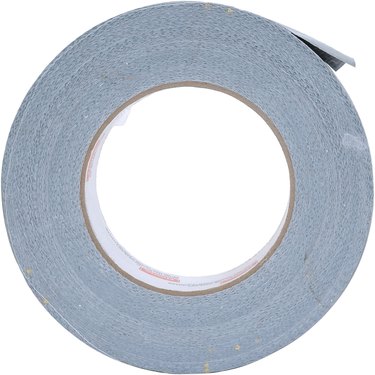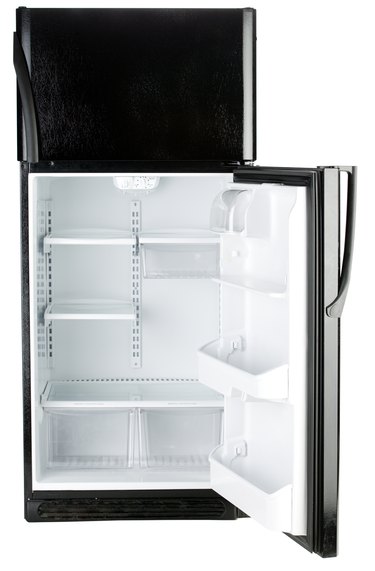
A healthy lifestyle requires lots of fruits and vegetables, yet appliance manufacturers have not increased the size of the average vegetable drawer since the 1960s. If you put a large head of lettuce and an oversize cabbage in one of these drawers, for instance, and the cabbage rolls sideways, the drawer will stick shut. When you tug the drawer to loosen it, stress hairlines can begin to form in the plastic. The good news is that small cracks, chips and holes in your refrigerator's plastic vegetable drawers can be repaired.
Tape
Video of the Day

The worst thing about crisper cracks is that they can render a crisper useless. The crisper drawer's purpose is to keep air off the foods in it. A cracked crisper lets moisture escape or evaporate and will not keep greens crispy fresh. If the damage is slight, seal it appliance tape -- a specialty tape with a polyester or polypropylene backing -- available from home centers and hardware stores: Remove the crisper drawer from the refrigerator and wash it with warm water and dish detergent. Allow the drawer to reach room temperature. Apply the tape to the inside drawer surface, directly over the cracks. Start taping 1 inch before the start of a crack and extend the tape 1 inch past the end of the crack. Beware of using duct tape in the refrigerator, as the constantly cold, moist environment will cause it to bubble and peel.
Video of the Day
Glue
Holes and chips in a vegetable drawer are more difficult to fix. Plastic liner repair kits made just for refrigerators are available from Internet vendors like Repair Clinic. Alternately, fill small holes, one-half-inch or less, with special adhesives. Use appliance adhesive made for refrigerators, or try acrylic solvent cement or epoxy. Acrylic cement is more difficult to use, but the results are durable. The cement works by partially dissolving the surfaces it touches, resulting in a strong bond. If the drawer has a larger hole, purchase a thin piece of polycarbonate or acrylic sheet from a hobby store and make a patch. The patch diameter should be the size of the hole plus 2 inches. This will allow a 1-inch margin all around the hole for the glue bond. Place a weight or a can of soup on top of the glued patch for 30 minutes. Let the glue dry and cure for an additional 30 minutes before replacing the drawer.
Glide
Keeping your refrigerator's drawer glides clean lengthens the life of a crisper drawer by reducing friction. Most vegetable drawers are off-center in the refrigerator and are constantly being tugged partially sideways. Common lubricants such as oil or silicone spray are not appropriate for food storage; use plain beeswax or plain white paraffin instead. Rub the parrafin or beeswax on the glide portion on the drawer bottom. Then use a piece of fine cloth to polish the wax to a shine.
Replace

If a vegetable drawer is badly damaged or has warped over time, replace it. Vegetable bins are available to fit most refrigerator brands and models. The cost is usually less than $40. Most of the repairs discussed in prior steps will cost as little as $8 and as much as $29 depending on the tape, adhesive or liner kit that you purchase. So even if you can repair your vegetable drawer, you may decide to opt for a new one.